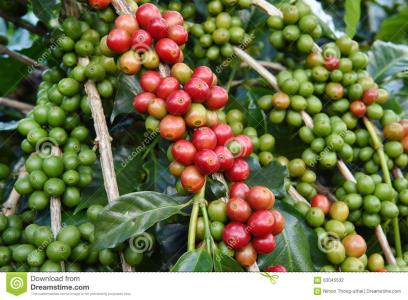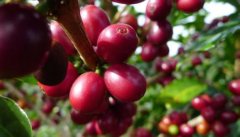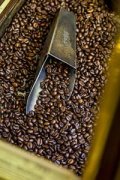A brief introduction to the Market Price of South Minas Fine Coffee Bean varieties in Brazil

At present, there are 2 million hectares of land in Brazil for growing coffee, and the largest is Arabica. These beans will eventually be sent to large bakers in various countries, that is, the well-known Santos (named after the port of export santos, not the producing area). Because of the coffee competition after 2000, the quality of coffee beans produced in the high-altitude areas of the south was appreciated, mainly by the farms around the Minas platform. Coffee quality is also the largest among Brazilian beans, such as Syracuse in the west of Minas and Matas in the east, Bashiya in the north or small farms in the south. Minas has almost become synonymous with Brazilian boutique coffee. In recent years, the coffee competition is accurate to be separated by treatment (water treatment / half-washing / half-sun / sun-drying), which has developed a variety of flavors, taste and finish, which is quite different from traditional Brazilian coffee. In particular, the half-sun method and the sun method perform best.
Since 1999, South Minas is the most successful manor in Brazil's "extraordinary cup" national treasure bean bidding activity, which is the backbone of Brazilian boutique coffee. As for the north-central mausoleum of Minas (Chapada de Minas) is not a boutique producing area, mostly for general commercial beans. To sum up, South Minas, the central and western Mesa of Minas (i.e. Serrado) and the higher forest areas in the southeast can all be called boutique producing areas of Minas province.
Coffee was first introduced to Brazil in the early 18th century. In 1727, the Brazilian government sent a personable army officer to secretly bring coffee seeds back to Brazil from French Gaiana under the pretext of mediating border disputes. It is said that the governor's wife of French Gayana was so fascinated by the officer that she secretly brought coffee tree seeds to him at a farewell dinner party. At present, there are 2 million hectares of land in Brazil for growing coffee, and the largest is Arabica.
Brazil accounts for about 1/3 of the world's annual coffee production (by far the world's largest coffee producer and exporter). In 2015, Brazil produced a total of 36.89 million bags of coffee (each bag of 60kg). How many cups of coffee can you imagine?
Brazilian coffee does not seem to have a good reputation all the time. It is often heard that it is heavy rather than quality. In fact, Brazilian coffee has many little-known features. Bruna Costa, the founder of It Caf é, is a coffee fan and coffee producer. He grew up on a coffee farm in Sao Paulo, Brazil, visited many coffee producing areas and mastered a wealth of coffee knowledge, especially fine Brazilian coffee like the back of his hand. As a supporter of Brazilian coffee, he wants to share some experiences with us, hoping that we can have a new understanding of Brazilian fine coffee.
According to this standard, the producing areas of Brazil can also be divided into five grades:
Extremely meek: South Minas, Serrado platform in the central and western part of Minas / Mojiana / Bahia Diamond Plateau in northeastern Sao Paulo province
Supple: slightly higher in Bahia / Minas southeast forest / Parana / San Espiritu (mausoleum) / central and western S ã o Paulo
A little softer: East and northeast of Minas
Not easy to read: Espiritu Santo / Parana (low altitude)
Iodine choking: slightly lower southeast of Minas / Espiritu Santo (flat)
Important Notice :
前街咖啡 FrontStreet Coffee has moved to new addredd:
FrontStreet Coffee Address: 315,Donghua East Road,GuangZhou
Tel:020 38364473
- Prev

A brief introduction to the history and culture of the origin and development of water-washed bourbon coffee beans treated by Muxiu in the western province of Rwanda
Rwanda has been growing coffee since colonial times. Although the crops are mainly coffee, the quality of coffee produced in Rwanda is not outstanding, and its status in the coffee world is low, and few people pay attention to it. Most of the coffee varieties grown in Rwanda are bourbon. Rwanda, known as the country of Thousand Hills, has a high-altitude mountain environment, fertile volcanic soil and abundant precipitation.
- Next

The planting market price of Costa Rican Faramy coffee beans treated with black SHB honey is simple.
In Costa Rica, there are many small-scale but high-quality coffee estates like Elsa. Their idea is to constantly improve the quality of raw coffee beans and get out of their own way of fine coffee in order to obtain the best economic benefits. Coffee is an important export product of Costa Rica, which earns a lot of foreign exchange for the country every year and is vividly called the golden seed. My unique natural conditions are very suitable for species.
Related
- Detailed explanation of Jadeite planting Land in Panamanian Jadeite Manor introduction to the grading system of Jadeite competitive bidding, Red bid, Green bid and Rose Summer
- Story of Coffee planting in Brenka region of Costa Rica Stonehenge Manor anaerobic heavy honey treatment of flavor mouth
- What's on the barrel of Blue Mountain Coffee beans?
- Can American coffee also pull flowers? How to use hot American style to pull out a good-looking pattern?
- Can you make a cold extract with coffee beans? What is the right proportion for cold-extracted coffee formula?
- Indonesian PWN Gold Mandrine Coffee Origin Features Flavor How to Chong? Mandolin coffee is American.
- A brief introduction to the flavor characteristics of Brazilian yellow bourbon coffee beans
- What is the effect of different water quality on the flavor of cold-extracted coffee? What kind of water is best for brewing coffee?
- Why do you think of Rose Summer whenever you mention Panamanian coffee?
- Introduction to the characteristics of authentic blue mountain coffee bean producing areas? What is the CIB Coffee Authority in Jamaica?

